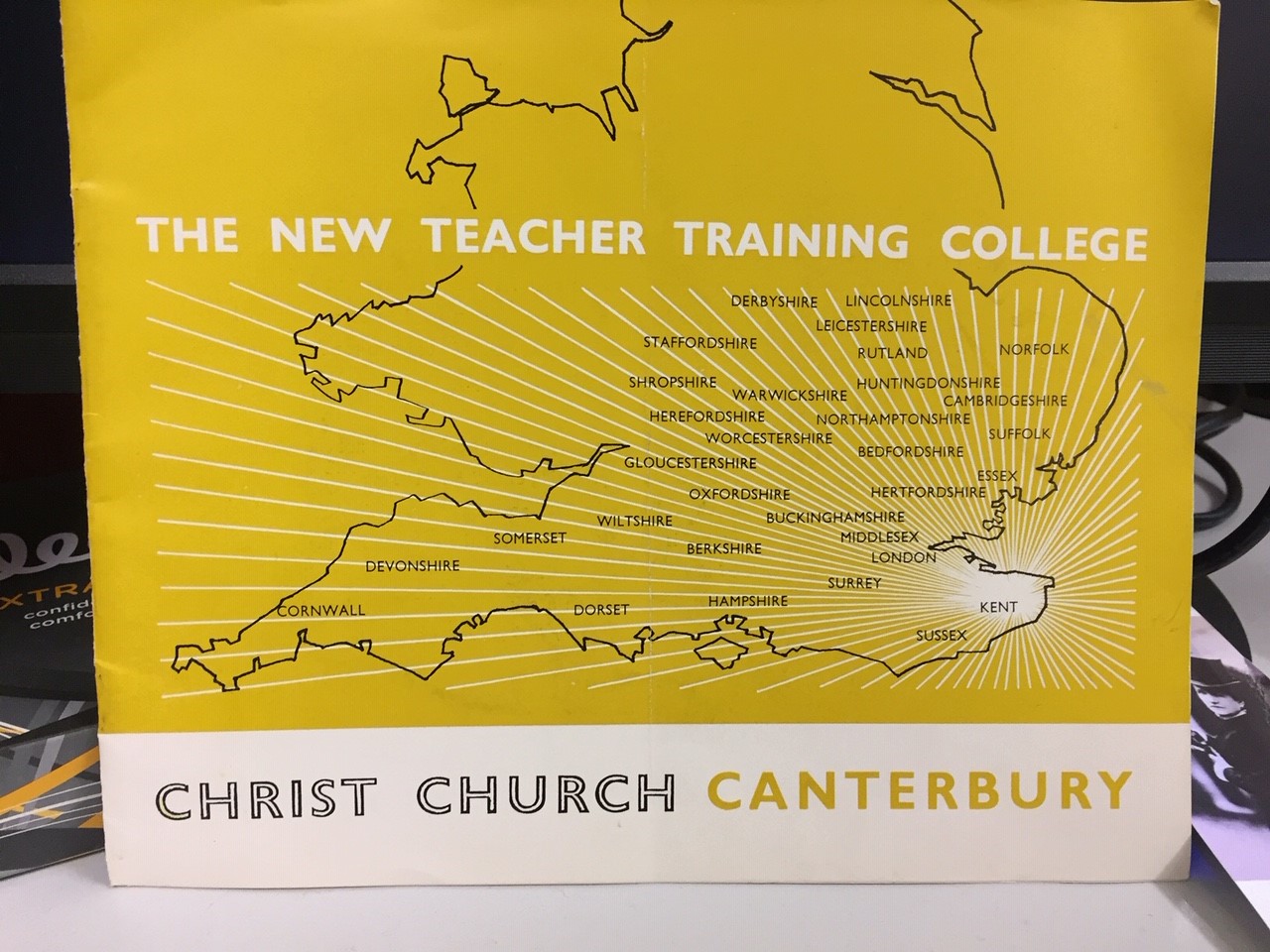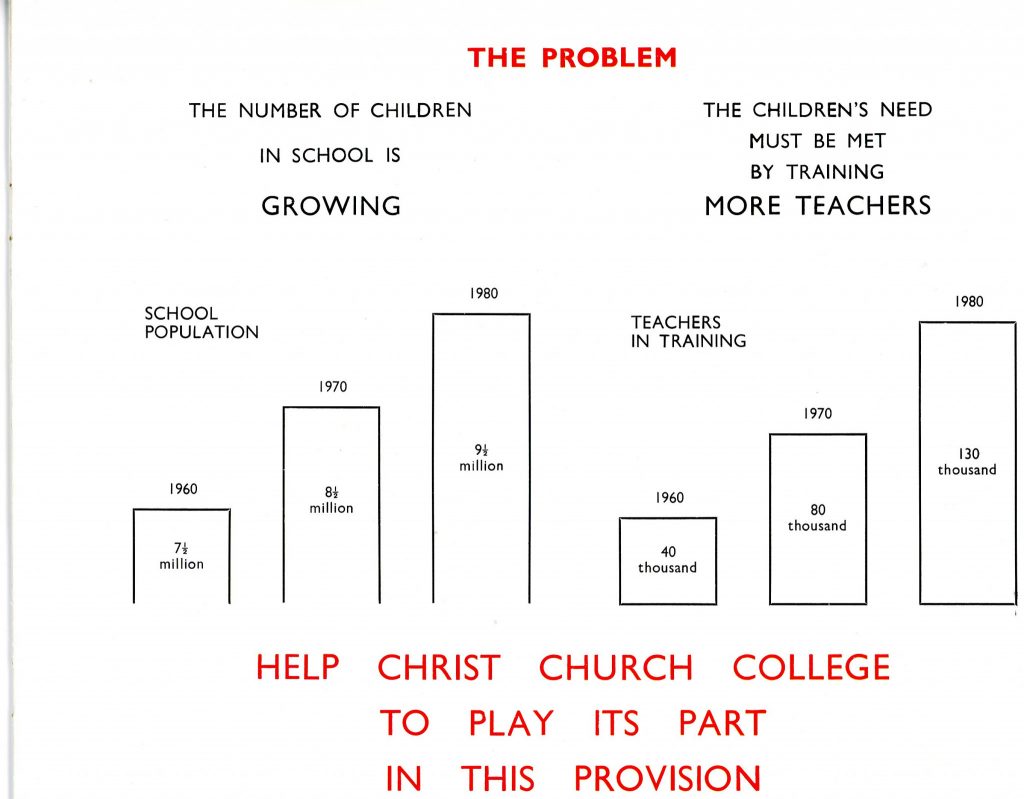As the university celebrates its diamond jubilee, the library has been uncovering items held in the university archive which tell the story of the university’s early days as a teacher training college.
Canterbury Christ College was founded in 1962 by the Church of England as a teacher training college. The brochure in the photograph above describes the new college and its vision to train more and better teachers. The brochure appeals for £50,000 to help pay for the chapel, build a hostel and equip the science and teaching blocks. Donors are advised that “an efficient industrial society depends upon good schools staffed by well-trained teachers.”
Calendars of Events
A calendar of events was produced for each term – Autumn, Lent and Summer. Unlike in today’s world of digital communications, everything had to be planned in advance. These calendars were not printed on-site but at Gibb’s printers in Orange Street. They were full of intellectually stimulating and culturally enriching events.
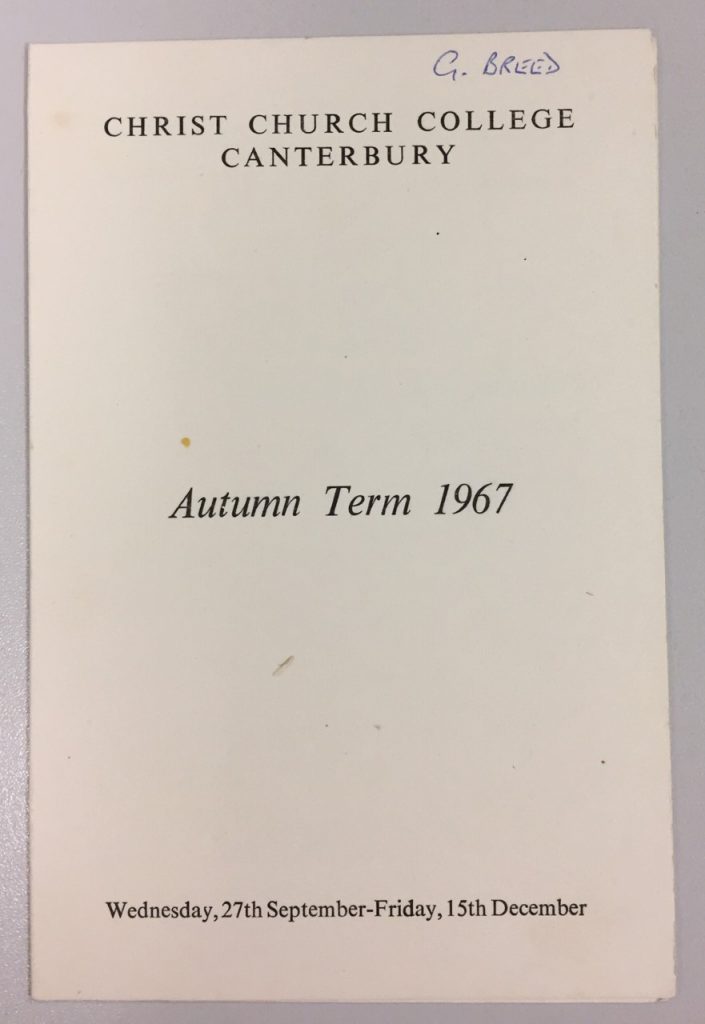
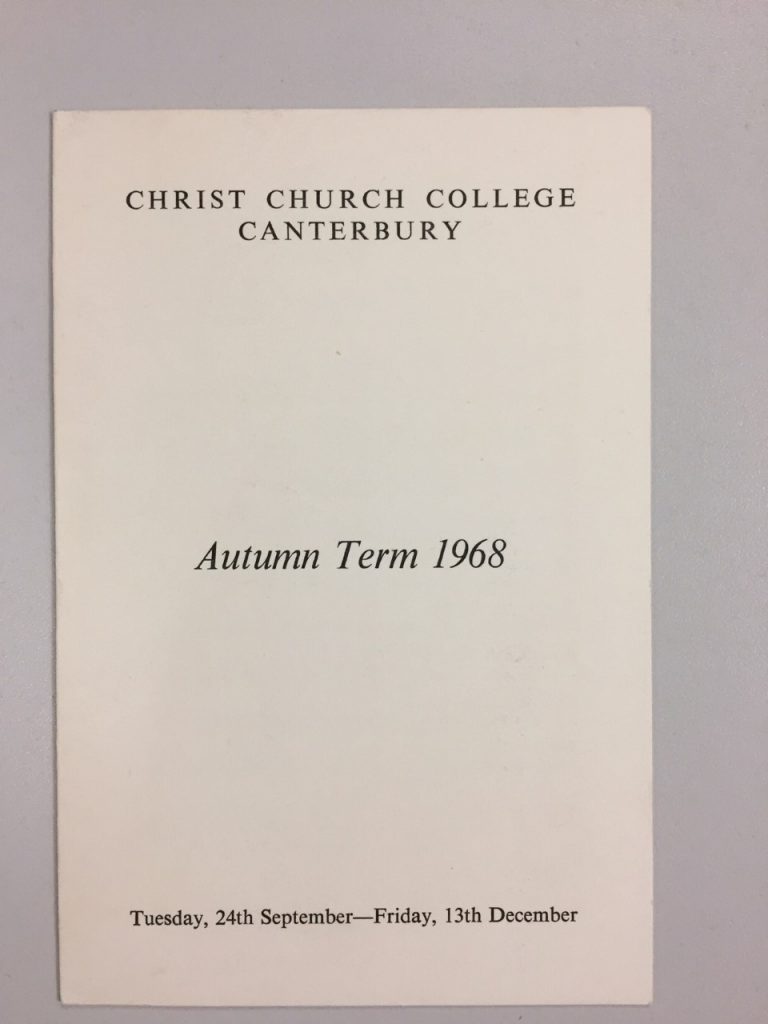
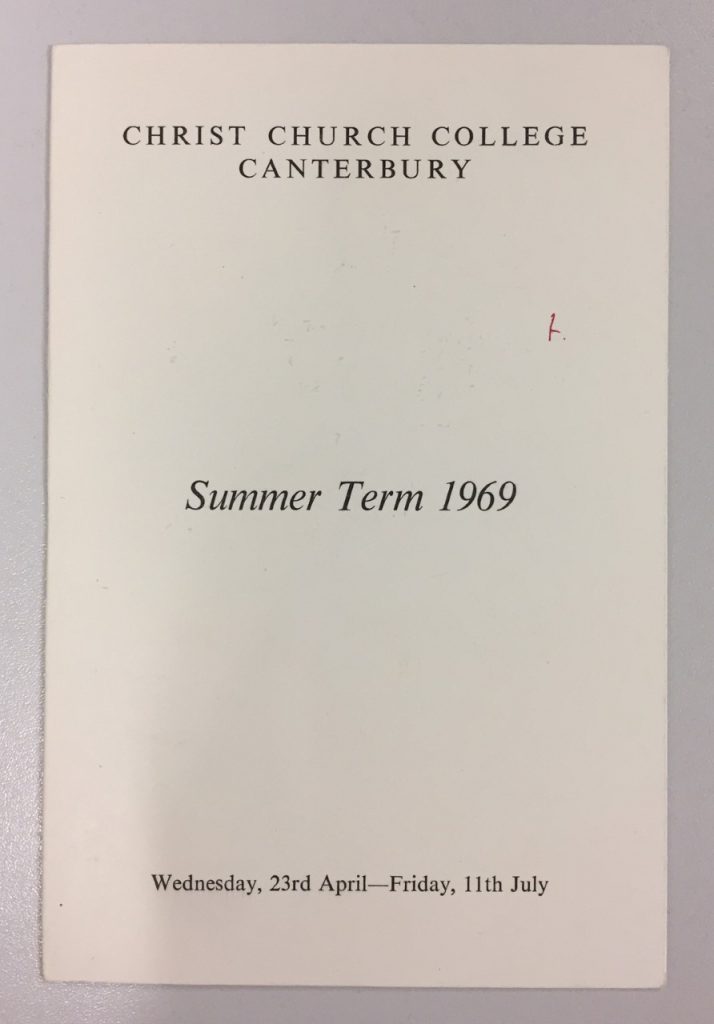
Events included examinations, fieldwork, services in the chapel, sixth form conferences, piano recitals, sports tournaments, book and art exhibitions, the Going Down Dinner, the Summer Ball, the Christmas Fair and theatre productions. On the 22nd January 1967, the Archbishop of Canterbury visited and in May of the same year, there was a five-day visit from Dutch students.
Guest Lectures
Guest lectures were given on topics such as “Fixing wages”, “Why do we seek knowledge”, “Trade Unions”, “Voluntary Service Overseas” and “European Integration”.
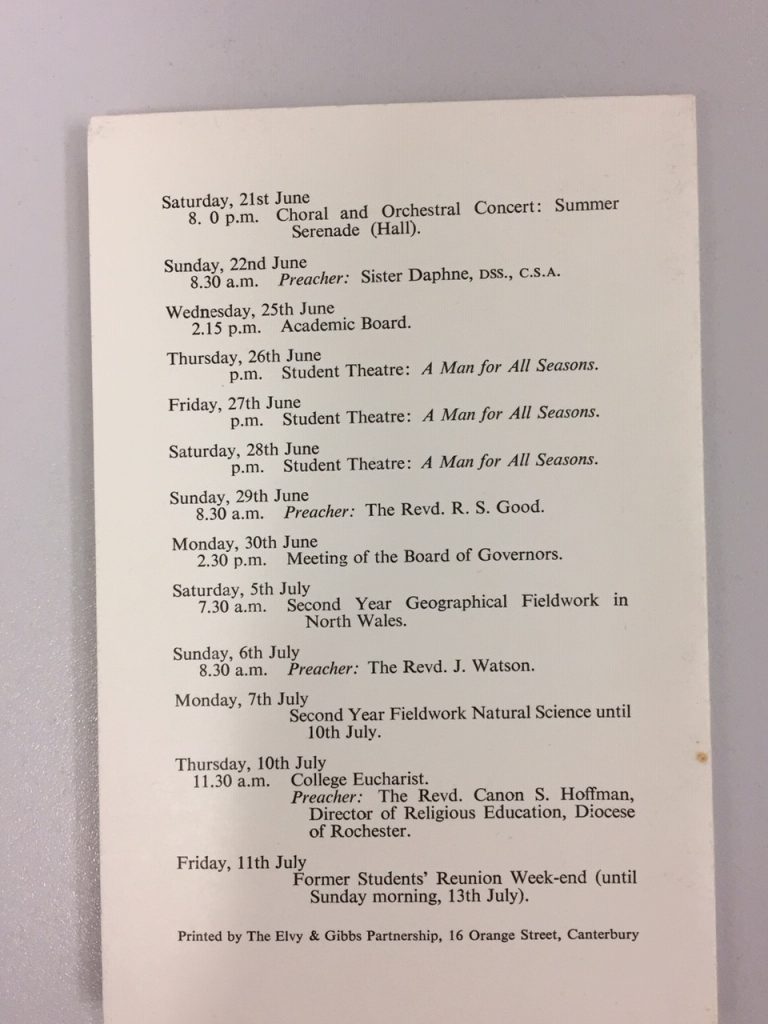
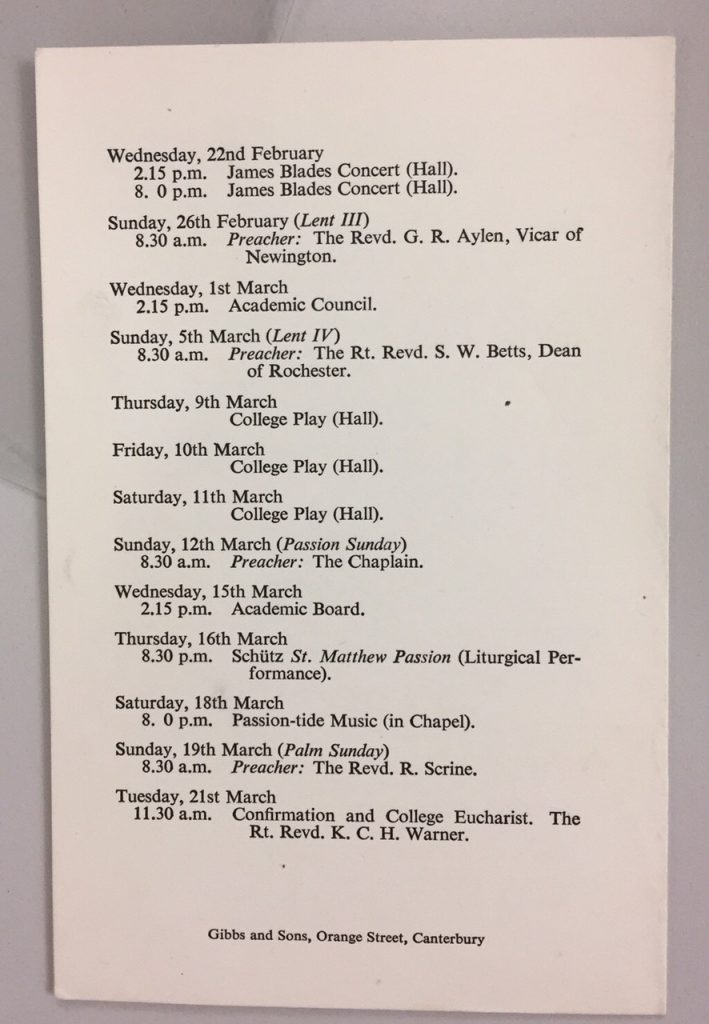
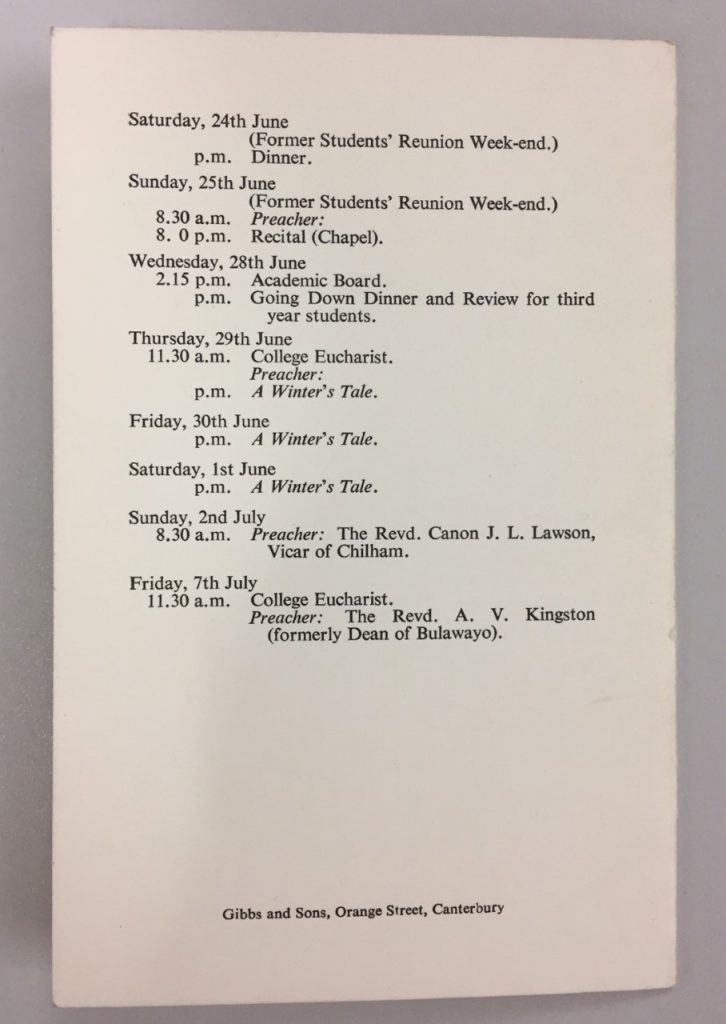
Entertainment
Music concerts were held about three times a term and included organ recitals by Adrian Selway and Walter Emery, a concert by percussionist James Blades, who was professor of percussion at the Royal Academy of Music, a piano recital by Andrew Haigh and a performance by the Galliard Harpsichord Trio.
Students’ Union
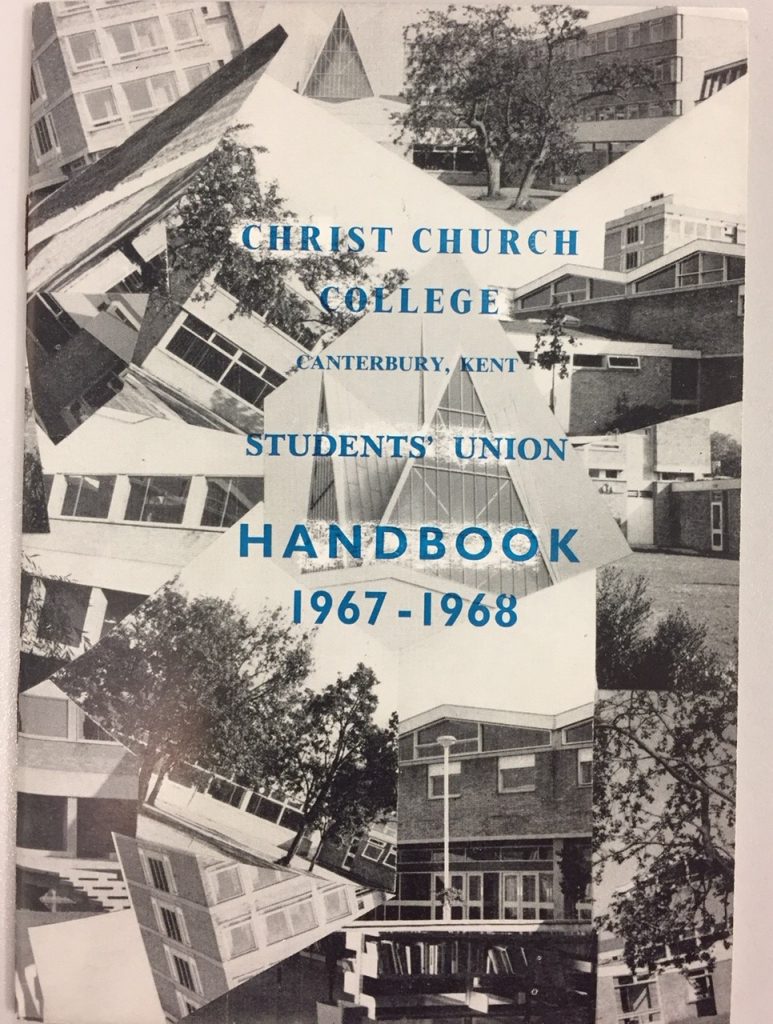
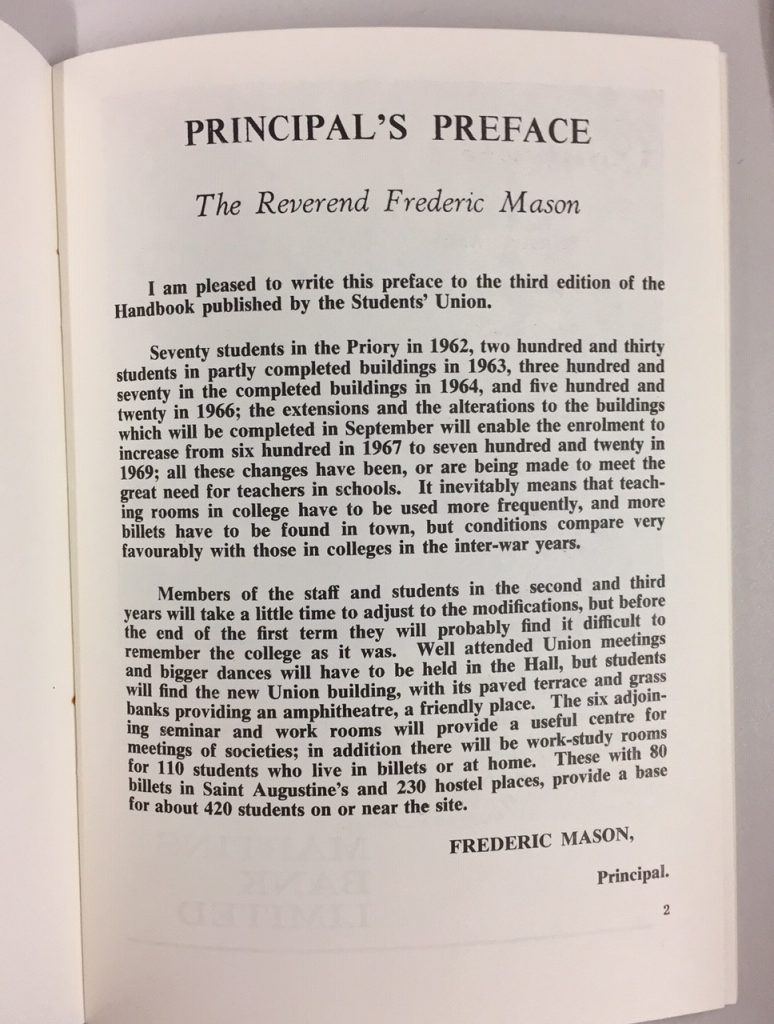
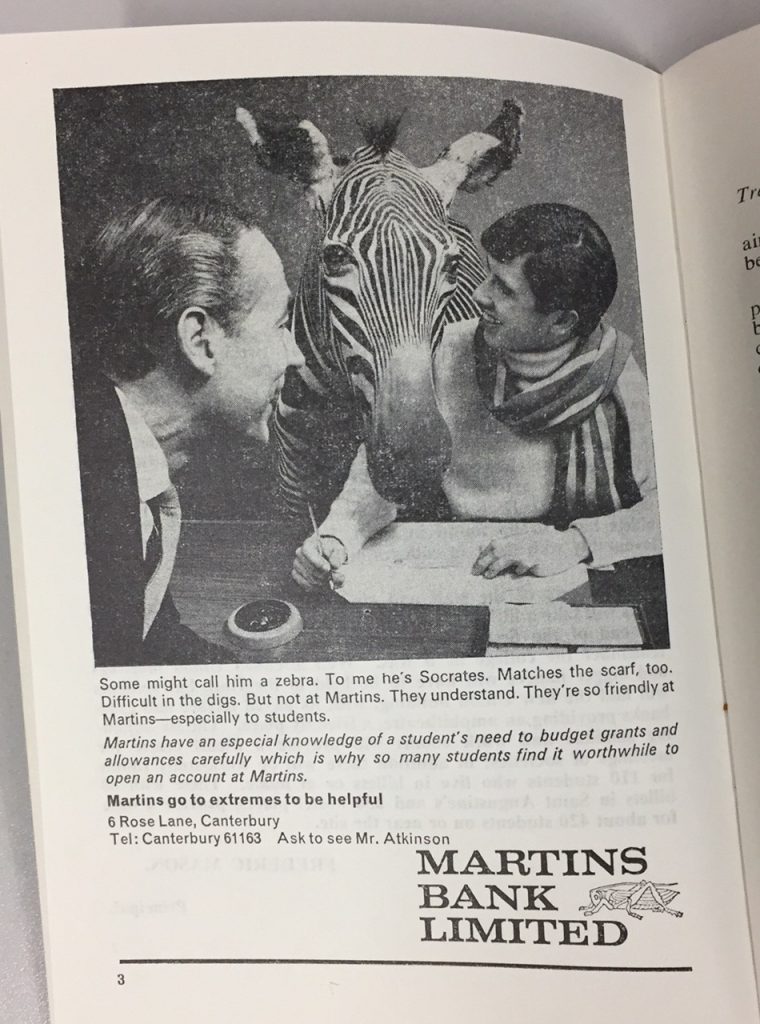
The Students’ Union Handbooks provide an interesting insight into the life of the university. In the third edition of the handbook illustrated above, the Principal, Frederic Mason, describes the growth of the college in its first five years – from 70 students to 600 in 1967. The advertisement by Martins Bank Limited welcomes students and their zebras to the bank.
Clubs and Societies
The Students’ Union had a range of clubs and societies – ballroom dancing, bell ringing, chess, Christian society, film society, folk and jazz, rambling, social action (babysitting, visiting the elderly, working with the Dover Borstal and deprived children and flag-selling for charities), Scout and Guide club, S.U.M.S (Students’ Union Mathematical Society), Travellers’ Society (slide shows of journeys abroad), dramatic society, film unit, photographic society and the Judo club.
Sport
There were 14 sports clubs in 1967 including badminton, basketball, hockey, sailing, tennis and rock-climbing. The sports representative, Colin Townsend, urged students to take part: “I take this opportunity to remind all students that the reputation of the college depends upon the people in the college. The only way that a college can make a name for itself is by all students taking an active part in college life.”
Night Life
Life for students was quite different from today. Students were only allowed visitors in their accommodation between the hours of 12.30 pm – 9.45 pm on weekdays, with an additional hour until 10.45 pm on Friday and Saturday nights. All students had to be back in their rooms by 11 pm on weekdays and midnight on Friday, Saturday and Sunday. Late passes could be requested from the Porter’s Office allowing students to stay out until 1.00 am. These passes had to be requested by 9.15 am on the day when the pass was needed. If a student needed to stay out later than 1.00 am the Vice Principal had to sign the form. First years were only allowed 5 late passes per term.
Facilities
In 1967, the Students’ Union was well equipped with a typewriter, duplicating machine and sewing machine. The launderette had coin-operated washing machines – a half an hour’s wash cost 1 shilling. By 1968, there were two sewing machines – one manual and one electric! The launderette put out an appeal to “helpless males” (remember this was the 60s and language was very sexist) advising them to shove all their clothes in the wash and have a swift drink in the bar. Post was delivered by the porter, Mr Charles, to the pigeon holes. There was also a letterbox for outgoing post and two stamp machines. The College had a visiting doctor Dr Lloyd-Roberts who held a surgery at 12.00 pm on Tuesdays in the sickbay.
College Magazine
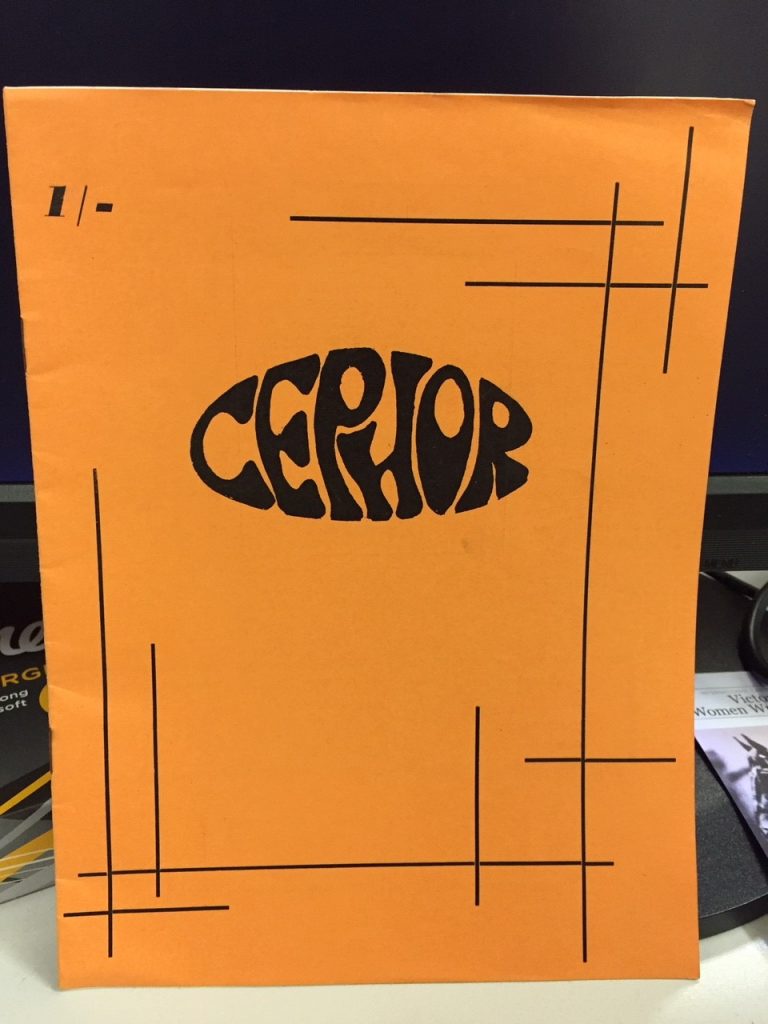
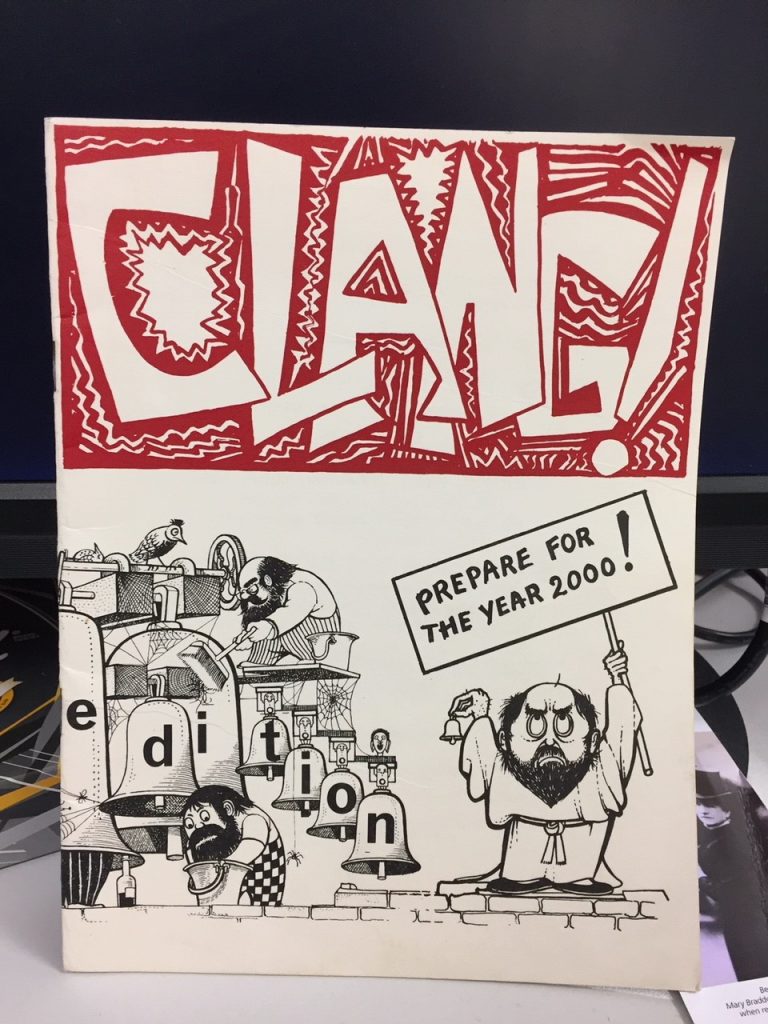
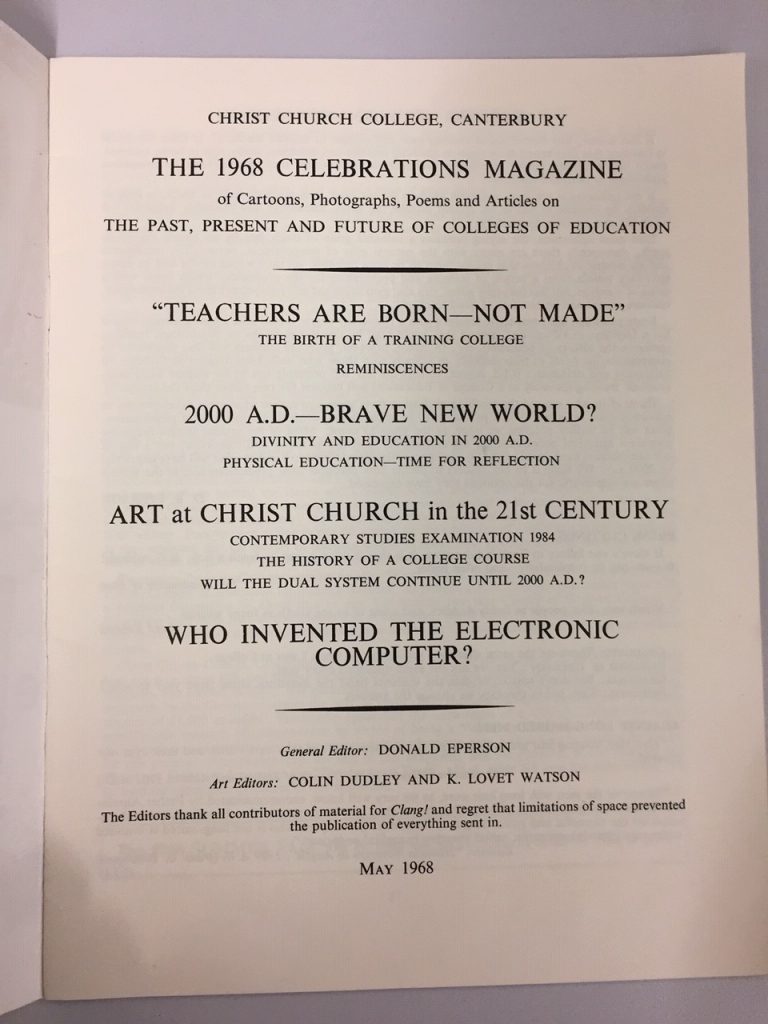
The College had a termly magazine entitled “Cephor” which contained “a hotch-potch of articles and features, fact and fiction, ideas and ideologies”. Students interested in journalism were requested to “address a note to that effect to “Cephor” – and put it in pigeon-hole “C”. In 1968, a celebratory magazine called “Clang” was produced including cartoons, photographs, poems and articles on the past, present and future of colleges of education. In the magazine, students look forward to what life would be like at Christ Church in the year 2000. The cartoons and poetry are very amusing. Here is “G.N.” on “The History of a College Course”.
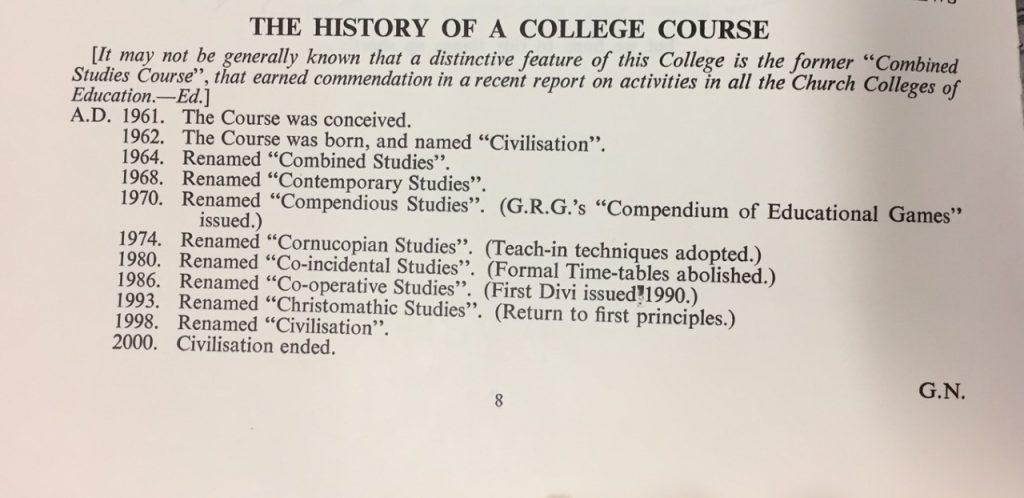
You can read more about the university archives in this blog post or you can come and visit them yourself to discover more fascinating stories about student life through the decades. Please email in advance if you would like to book an appointment.
 Library
Library Michelle Crowther
Michelle Crowther 1540
1540